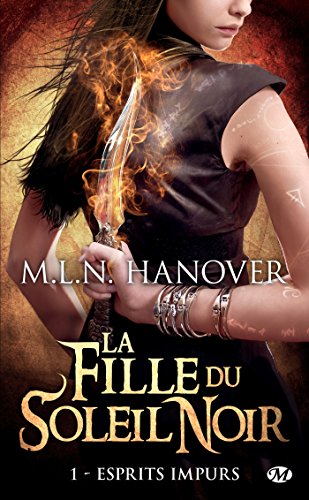By Ian G. Wilson
 Ann Cleeves’ seventh installment in her Shetland Islands series is a page turner. Some of you may be familiar with the television series, Shetland, which features atmospheric renderings of Cleeves’ novels set in the islands. Others may have run across the first book in the series and been fans ever since. In either case, there is a wide appeal to mysteries set in remote areas with limited police facilities, spotty cell phone reception, people living off the land (though in the islands, there is as much living to be made under the ocean since the boom in North Sea oil and gas), and rugged, beautiful scenery.
Ann Cleeves’ seventh installment in her Shetland Islands series is a page turner. Some of you may be familiar with the television series, Shetland, which features atmospheric renderings of Cleeves’ novels set in the islands. Others may have run across the first book in the series and been fans ever since. In either case, there is a wide appeal to mysteries set in remote areas with limited police facilities, spotty cell phone reception, people living off the land (though in the islands, there is as much living to be made under the ocean since the boom in North Sea oil and gas), and rugged, beautiful scenery.
Cold Earth begins with a funeral, a not uncommon way to start a mystery. What is uncommon is the sudden landslide that sweeps over the hillside cemetery, toppling gravestones and causing mourners to flee from the moving soil. At the top of the hill is a house, and within its ruins, Detective Jimmy Perez discovers the body of a woman wearing a red dress. No one he talks to knows her identity, and before they can even begin to track down the person who strangled her, the detective and his crew must discover who she is, which takes some smart police work. A variety of interesting local characters, both young and old, are suspects; Cleeves does a fine job of describing a cross section of the population of the islands’ small towns and farms.
Perez is a curious character. Something of a workaholic, he is also a single dad to his stepdaughter, Cassie. He grieves over the death of his partner, Fran, frequently thinking about her throughout the course of the novel. He can be silent and broody, but has a strong sense of duty and responsibility towards both his job and his daughter. Here we see him approaching the scene of a crime:
“She walked very fast ahead of him across the sheep-cropped grass. The sun was melting the snow in patches, but the air was still very cold. An oil supply ship seemed to be moving very slowly on the horizon. It looked as if it was made of silver. They came to the edge of a shallow cliff that sloped down to a shingle beach, fringed at each end with rock pools. Fran had brought Perez here one summer afternoon. She’d swum in the water, screaming with laughter at the cold, calling him a coward for not following. Later they’d gone back to her house and made love. She’d have done it on the beach, but he’d been too much of a coward for that too.”
I was curious about the surname of the detective, as Perez sounds like a decidedly un-Scottish sobriquet. So I did a little research, and it is true that a vessel of the Spanish Armada, El Gran Grifón, was wrecked on the shores of Fair Isle in 1588. The sailors received shelter and food from the local crofters. They taught the women of Fair Isle how to use lichens to dye their wool, and, legend has it, introduced the complex patterns that are still famous in Fair Isle knitware. However, about half the sailors died of privation during the harsh winter; the others were rescued and tried, unsuccessfully as it turns out, to sail back to Spain. Cleeves’ conceit is that some of the sailors may have had a cozier relationship with the women of Fair Isle. Perez, who is from Fair Isle, is a descendent of these sailors. Other than the wreck of El Gran Grifón and the death or rescue of the seamen, little has been proven, so Cleeves may be taking writer’s license in giving Perez his last name, but it is an intriguing possibility.
Willow Reeves is another captivating character. As a Detective Chief Inspector, she is Perez’s superior, but she finds she has to work with him on a more or less equal partnership basis, as she is not from the islands. She works in Inverness, and although she and Perez have come together before, she is still unfamiliar with the territory. The relationship between the two is friendly, perhaps too much so for the comfort of either. She has a direct but not insensitive manner when conducting interviews; she knows all the right questions and how to ask them.
Sandy Wilson is the junior member of the team. A graduate of the Lerwick secondary school, he has grown up in Shetland, and his local knowledge and ability to put at ease the younger suspects and witnesses in the case makes him invaluable. He also does much of the telephone, computer, and physical legwork needed in solving a complex crime.
Cleeves skillfully uses a rotating third person point of view throughout Cold Earth, and as such, we come to know Jimmy, Willow, and Sandy well, and there is the happy addition of a fourth main character, the crofter’s wife, Jane Hay, whose family lives near to the scene of the crime. She is both suspect and witness, and readers learn about her checkered history and her attempts to retain her own and her family’s stability during the police investigation:
“She could do with some more rosemary for the lamb and some mint for the sauce, but really she just needed a few minutes away from the house. Since the landslide, it had seemed like a different place. It wasn’t just that the view was disfigured and that now, looking down towards the coast, she could see the dark scar left by the mud. It was as if the shifting land had loosened the foundations of the family. There was nothing firm left. She couldn’t believe anything that either Kevin or the boys told her.”
Cold Earth is fast paced, which makes it an exciting read. And Cleeves does well in showing the sometimes conflicting mix of old and new in Shetland society: the ambitious politicians and lawyers, the “oilies” from the rigs in the North Sea, the younger generation just out of school, working at places like the local supermarket or waiting tables at the arts center in Mareel, and the older, rural inhabitants of farms who till the soil or herd sheep, sometimes living in small, dark, decrepit farm buildings. Where I’ll admit to being a little disappointed is in the simplicity of the author’s prose, as I felt some adornment, perhaps in the form of figures of speech, would have helped develop the atmosphere of the islands more effectively. Cleeves does describes climatological conditions such as stormy weather or frost, loneliness and isolation, pounding surf, and the like, but her descriptions are spare and not enticing.
Still, the mystery is strong, as are the characters, and I was not bored with Cold Earth. This is the first novel of the Shetland Island series I have read, though I have seen a number of the episodes on television. If you are a fan, either of the books or the television series, you will enjoy Cold Earth, despite its possible literary failings.
Cleeves became familiar with the Shetland Islands while visiting there with her husband, who is an ornithologist. Fair Isle is renowned as a bird sanctuary and observation point, and although Cleeves herself is not so much interested in birds, she did fall in love with the scenery and people, enough to inspire her to write these mysteries based in the islands. The first book in the series, Raven Black, won the Duncan Lawrie Dagger Award.
Cold Earth was published by Minotaur Books in 2017 and is available now at Greenville Public Library.
Share this:




